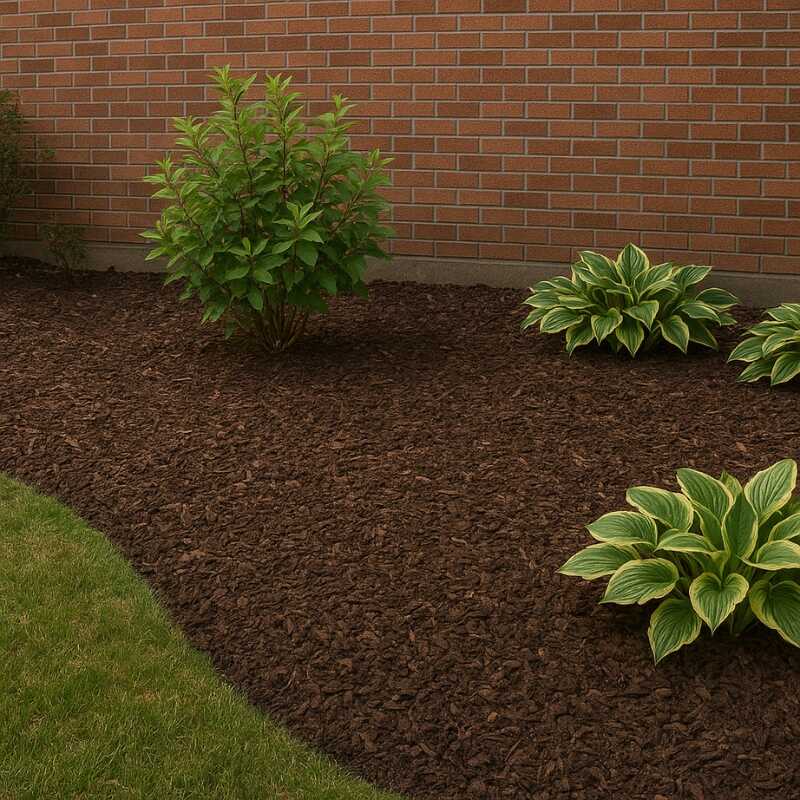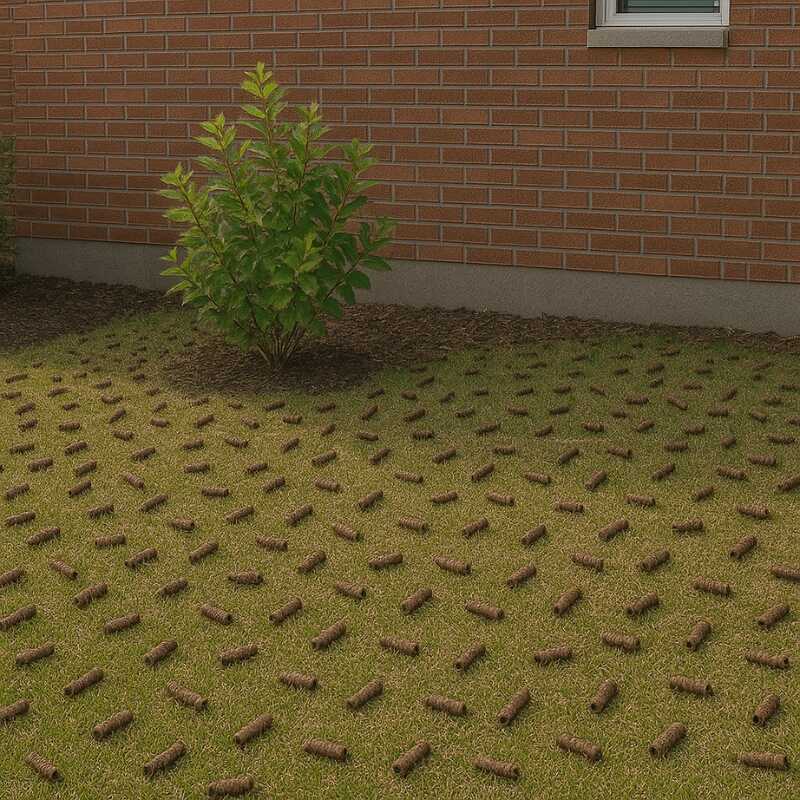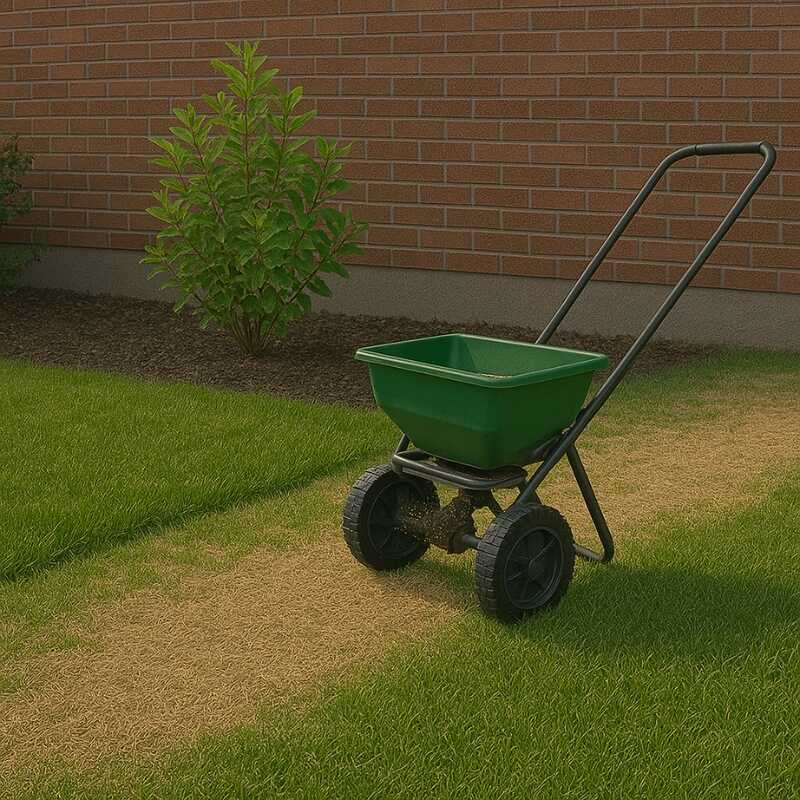Call 804-252-7468 and we’ll dispatch a certified crew as fast as possible. You can also visit our official website to request a rapid quote.
Ultimate Lawn and Garden Maintenance Guide for Homeowners
Your yard is more than just greenery—it’s the first thing guests and potential buyers notice, a reflection of your lifestyle, and a space where you unwind. But keeping it in top shape all year takes more than just occasional watering.
This blog serves as your complete manual for lawn and garden maintenance—from foundational soil care to smart fertilizing, watering strategies, and avoiding common mistakes. Whether you’re a DIY homeowner or hiring professionals like JJR Landscaping LLC, this guide helps you make informed decisions that lead to long-term landscape health.
Why Lawn and Garden Maintenance Matters All Year Long
Many homeowners only think about their yards in spring—but maintenance is a year-round commitment. Each season has unique needs that, when ignored, lead to:
Diseased plants
Patchy grass
Invasive weeds
Poor drainage
Diminished property value
By staying on top of lawn and garden care throughout the year, you create a resilient and vibrant outdoor environment that saves you time, stress, and money in the long run.
Understanding the Basics of Lawn and Garden Care
A healthy yard balances both a well-maintained lawn and a nurtured garden. But each has its own requirements:
- Your lawn demands regular mowing, feeding, and watering to stay thick and green.
- Your garden needs attention to plant selection, soil enrichment, and pest control.
Together, these spaces form a micro-ecosystem. When one fails, it can affect the other. Understanding how to synchronize their care ensures a landscape that thrives in all conditions.
Soil Health: The Foundation of a Thriving Yard
Everything starts with the soil. Without healthy soil, even the most advanced lawn or garden techniques will fail. Think of soil as the lifeblood of your yard—it provides water, air, nutrients, and a stable base for roots.
Key steps:
1. Soil testing
identifies nutrient deficiencies and pH levels.
2. Aeration
combats compaction and improves air flow to the roots.
3. Amendments
like compost or lime correct imbalances and enhance structure.
Lawn Mowing Best Practices for a Healthy Turf
Mowing isn’t just a cosmetic task—it directly affects grass health. Mowing too short or with dull blades stresses the lawn, making it vulnerable to heat, disease, and pests.
Best practices:
Never cut more than 1/3 of the grass height at once.
Mow regularly during the growing season to maintain thickness.
Switch mowing directions to avoid ruts and uneven growth.
Leave grass clippings (mulching) to naturally fertilize the lawn
Proper mowing keeps your lawn dense, weed-resistant, and deep-rooted.
Watering Techniques to Avoid Over- or Underwatering
Water is essential—but too much or too little can be devastating. For water-saving strategies that also promote healthy turf, check out the EPA’s WaterSense Outdoor Guide.

Overwatering
Leads to root rot, fungal growth, and nutrient leaching.

Underwatering
Stresses plants, slows growth, and browns grass.
Watering strategies:
- Water early morning (5–9 a.m.) to reduce evaporation.
- Deep, infrequent watering encourages strong roots.
- Use drip irrigation or soaker hoses for garden beds.
- Lawns need about 1–1.5 inches of water per week, depending on rainfall.
Efficient watering = healthier plants + lower bills.
Fertilizing Your Lawn and Garden Like a Pro
Fertilizer is like food for your plants—but too much can burn them, and too little leaves them undernourished.
What you gain:
Choose slow-release fertilizers for consistent feeding.
Organic fertilizers improve soil health long-term.
Apply fertilizer based on the growth stage: more nitrogen in spring for grass, more potassium in fall for root health.
Use a spreader for even lawn coverage.
The goal is balance—feeding your plants without shocking them. Learn more about choosing and applying fertilizers from the University of Georgia Extension, a leading source in lawn care science.
Managing Weeds, Pests, and Lawn Diseases Naturally
Every yard will eventually face invaders: weeds, insects, or fungus. The trick is managing them without over-relying on harsh chemicals.
Solutions:
Mulching prevents weed seeds from getting sunlight.
Corn gluten meal acts as a natural pre-emergent.
Ladybugs and nematodes target pest larvae without harming other plants.
Rotate crops in your garden to reduce disease buildup.
Healthy plants are the best defense—they outcompete weeds and resist pests naturally.
Nature works in cycles—and so should your yard care. Here’s what to do every season:
Spring
- For Lawncare: Aerate, dethatch, overseed.
- For Gardencare: Plant annuals, prune, refresh mulch
Summer
- For Lawncare: Mow high, water deeply
- For Gardencare: Deadhead flowers, treat pests
Fall
- For Lawncare: Fertilize, seed, leaf removal
- For Gardencare: Plant bulbs, prune perennials
Winter
- For Lawncare: Tool maintenance, prep for spring
- For Gardencare: Protect roots, plan next season
For planting schedules and tips by season, visit the Old Farmer’s Almanac Gardening Calendar.
Pruning and Trimming for Garden Plants and Hedges
Pruning isn’t just about shaping—it’s about managing plant health and growth.
- Remove dead or crossing branches to prevent disease.
- Shape plants for airflow and sunlight penetration.
- Know your plant: some bloom on old wood, some on new.
Hedges need regular shaping to avoid woody centers and keep a lush appearance.
Mulching Benefits and How to Apply It Properly
Mulch is like a blanket for your soil—it regulates temperature, moisture, and weed growth.
Mulch types:

Organic
Bark, wood chips, straw—breaks down into compost.

Inorganic
Rocks, rubber—not ideal for plant beds.
Apply 2–3 inches but never pile it against stems or trunks (which can cause rot). Refresh annually for best results.
Lawn Aeration and Overseeding Explained
Over time, soil gets compacted, and grass thins out. Aeration and overseeding are the cure.

Aeration
Punches holes into the soil, letting water and air reach roots.

Overseeding
Fills in bare patches and improves turf density.
Do both in early fall for the best establishment before winter dormancy.
Sustainable Practices for Eco-Friendly Lawn Care
Being green with your lawn care doesn’t mean going wild—it means being smarter.
- Use native plants that require less water and maintenance.
- Compost food and yard waste to enrich soil.
- Choose battery-powered tools to reduce emissions.
- Collect rainwater for irrigation.
Sustainability saves money, helps the planet, and creates a healthier yard ecosystem. Discover how native plants can reduce water use and boost biodiversity at the National Wildlife Federation’s Gardening Resource.
Tools and Equipment Every Homeowner Should Own
You don’t need a shed full of machines—just the essentials:
- Lawn mower and string trimmer
- Rake, spade, and hoe
- Pruning shears
- Sprinkler or irrigation system
- Garden gloves and wheelbarrow
Clean tools last longer and prevent the spread of disease between plants.
Common Mistakes in Lawn and Garden Maintenance (and How to Avoid Them)
Even well-intentioned homeowners can make costly mistakes. Here’s how to avoid them:
Cutting Grass Too Short
- Problem: Browning, weak roots
- Solution: Mow at recommended height
Overwatering
- Problem: Root rot, fungal disease
- Solution: Water deeply, not daily
Ignoring Soil pH
- Problem: Poor nutrient absorption
- Solution: Test and amend soil regularly
Piling Mulch Against Stems
- Problem: Rot and pests
- Solution: Leave a 2-inch gap around base
Awareness leads to better habits and better results. Cornell University’s Lawn Care Resources are great for understanding common lawn issues and how to fix them.
About JJR Landscaping LLC – Trusted Tree Experts in Richmond
We are more than just a landscaping company. We’re your Landscaping health partners, offering end-to-end services from planting to removal.
Located at 8702 Lawndell Rd, Richmond, VA 23229
Over 18 years of trust and top-rated customer service
FAQs About Lawn and Garden Maintenance
1. How often should I fertilize?
1. How often should I fertilize?
Lawn: 2–4 times/year. Garden: every 4–6 weeks during growth season.
2. Can I grow vegetables next to my lawn?
2. Can I grow vegetables next to my lawn?
Yes, but keep them separated from chemical treatments and use organic methods nearby.
3. When is the best time to plant new grass?
3. When is the best time to plant new grass?
Early fall or early spring—cool temperatures, but warm soil.
4. How do I revive a brown lawn?
4. How do I revive a brown lawn?
Aerate, fertilize, water deeply, and reduce mowing frequency.
5. Should I remove grass clippings?
5. Should I remove grass clippings?
No—leave them to decompose unless they’re diseased.
6. Is compost better than fertilizer?
6. Do you handle cleanup after service?
Compost builds long-term soil health; fertilizer gives quick nutrient boosts. Both are ideal together.
We Provide Ultimate Lawn and Garden Maintenance in:
🌱 Ultimate Lawn and Garden Maintenance in Richmond, VA
From aeration to pruning, we maintain healthy lawns and vibrant gardens across the city
🏡 Ultimate Lawn and Garden Maintenance in Tuckahoe, VA
Weekly mowing, edging, and seasonal plant care for suburban properties
🌸 Ultimate Lawn and Garden Maintenance in Mechanicsville, VA
Weed control, mulching, and flower bed refresh for every season
🏙 Ultimate Lawn and Garden Maintenance in Petersburg, VA
Urban garden upkeep and lawn care tailored for high-traffic areas
🛍️ Ultimate Lawn and Garden Maintenance in Short Pump, VA
Luxury lawn services for townhomes and new construction
🌊 Ultimate Lawn and Garden Maintenance in Hopewell, VA
Water-smart lawn plans and coastal garden management
🏠 Ultimate Lawn and Garden Maintenance in Chester, VA
Lawn mowing, hedge shaping, and flower bed care for family homes
🌿 Ultimate Lawn and Garden Maintenance in Meadowbrook, VA
Custom turf programs and native plant management
⚡ Ultimate Lawn and Garden Maintenance in Colonial Heights, VA
Fast cleanup, garden revitalization, and edging services
🌲 Ultimate Lawn and Garden Maintenance in Laurel, VA
Shaded lawn management and seasonal flower maintenance
🌺 Ultimate Lawn and Garden Maintenance in Bon Air, VA
Flower rotations, bush trimming, and full lawn care plans
🍃 Ultimate Lawn and Garden Maintenance in Highland Springs, VA
Foundation planting care and eco-friendly lawn practices
🍂 Ultimate Lawn and Garden Maintenance in Glen Allen, VA
Leaf removal, seeding, and shrub maintenance year-round
🪴 Ultimate Lawn and Garden Maintenance in Brandermill, VA
Garden design upkeep and perennial care packages
🏗️ Ultimate Lawn and Garden Maintenance in Manchester, VA
Hard-to-reach yard care for homes with limited access
🌾 Ultimate Lawn and Garden Maintenance in Ashland, VA
Wide-lot mowing, pasture trimming, and planting zone guidance
🌼 Ultimate Lawn and Garden Maintenance in Colonial Beach, VA
Salt-resistant garden support and seasonal cleanups
Final Thoughts: Consistent Maintenance = A Lush, Long-Lasting Landscape
A beautiful lawn and garden isn’t just luck—it’s a result of informed, consistent care. From proper mowing and watering to seasonal planning and sustainability, every step matters.
If you’re in the Richmond, VA area and need expert help, contact JJR Landscaping LLC. We bring 18+ years of experience in lawn and garden maintenance that’s professional, timely, and tailored to your property.
📞 Call 804-252-7468 or visit us at 8702 Lawndell Rd, Richmond, VA 23229.

